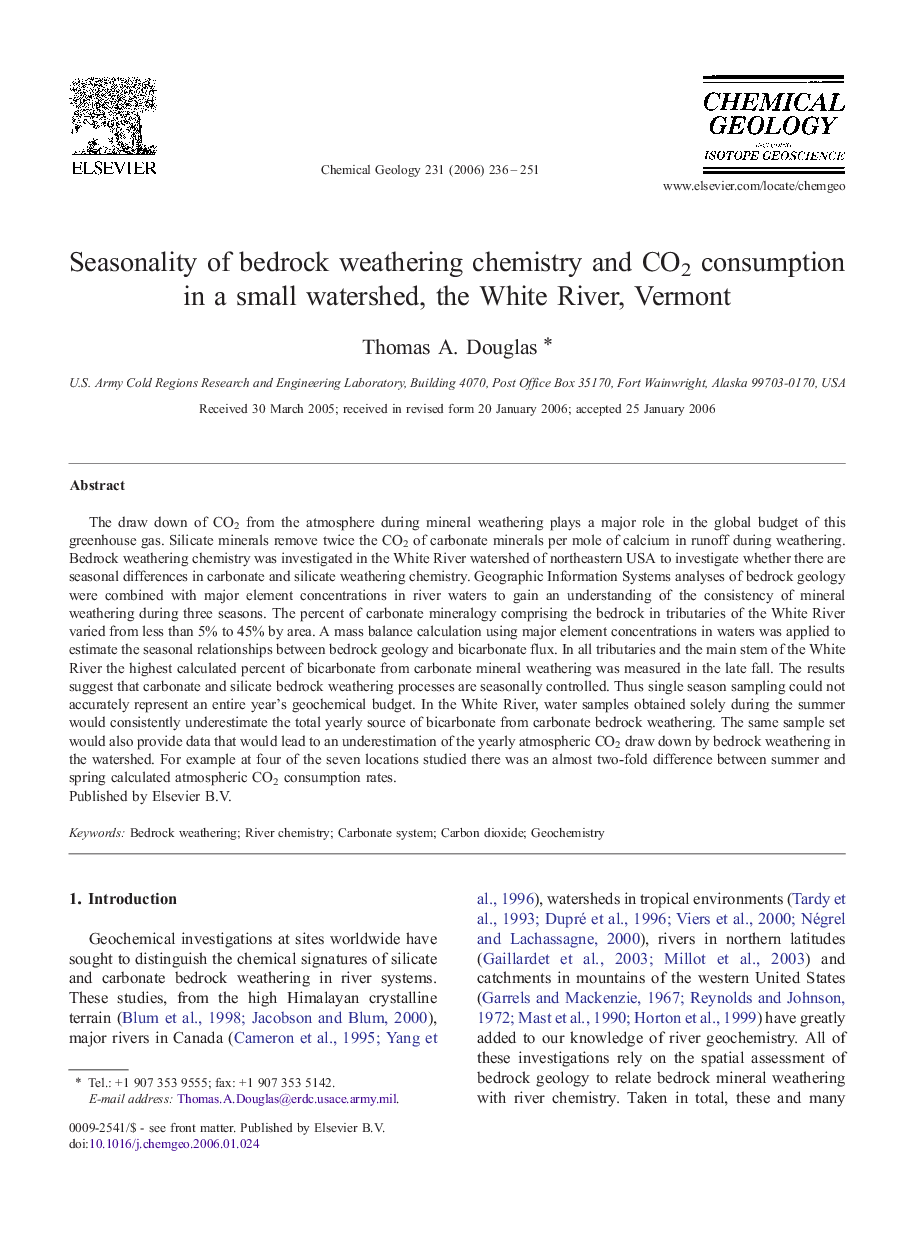| Article ID | Journal | Published Year | Pages | File Type |
|---|---|---|---|---|
| 4701421 | Chemical Geology | 2006 | 16 Pages |
The draw down of CO2 from the atmosphere during mineral weathering plays a major role in the global budget of this greenhouse gas. Silicate minerals remove twice the CO2 of carbonate minerals per mole of calcium in runoff during weathering. Bedrock weathering chemistry was investigated in the White River watershed of northeastern USA to investigate whether there are seasonal differences in carbonate and silicate weathering chemistry. Geographic Information Systems analyses of bedrock geology were combined with major element concentrations in river waters to gain an understanding of the consistency of mineral weathering during three seasons. The percent of carbonate mineralogy comprising the bedrock in tributaries of the White River varied from less than 5% to 45% by area. A mass balance calculation using major element concentrations in waters was applied to estimate the seasonal relationships between bedrock geology and bicarbonate flux. In all tributaries and the main stem of the White River the highest calculated percent of bicarbonate from carbonate mineral weathering was measured in the late fall. The results suggest that carbonate and silicate bedrock weathering processes are seasonally controlled. Thus single season sampling could not accurately represent an entire year's geochemical budget. In the White River, water samples obtained solely during the summer would consistently underestimate the total yearly source of bicarbonate from carbonate bedrock weathering. The same sample set would also provide data that would lead to an underestimation of the yearly atmospheric CO2 draw down by bedrock weathering in the watershed. For example at four of the seven locations studied there was an almost two-fold difference between summer and spring calculated atmospheric CO2 consumption rates.
